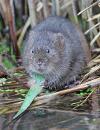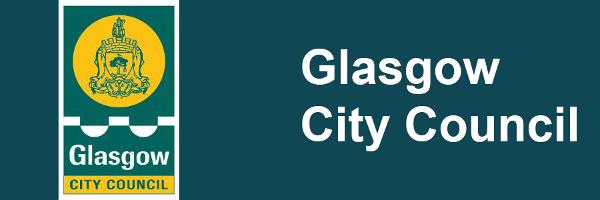Water Voles

Water voles have been present in Glasgow for hundreds of years and they have been recorded in wetlands including ditches, marshes, ponds, burns and canals. As the name suggests water voles traditionally live in and around water.
However, water voles were recently discovered in Glasgow living away from water and since then large populations have been recorded in the east end of the city living in long grassland in parks, road verges, gardens and derelict land (brownfield). These terrestrial water voles are termed fossorial which means adapted fordigging and they spend more time underground like a mole.
What is unique about Glasgow's water voles?
This adaptation to living in grasslands in such high densities in an urban environment is unique in the UK and recent research has revealed that this population is of national significance.
The council has been working with the Glasgow Natural History Society, NatureScot, People's Trust for Endangered Species, Seven Lochs Wetland Park and the University of Glasgow. Water voles are a protected species and all research is carried out under appropriate licences. The research has indicated that these water voles have adapted well to this new environment and they are present in numbers not observed in any other urban UK environment. Furthermore water voles are now scarce or absent over most of lowland Scotland, making this population particularly relevant to biodiversity conservation.
Find out more about water voles (PDF, 1 MB)(opens new window).
Projects and News
The Seven Lochs and North East Glasgow Water Vole Conservation Action Plan has now been produced. This action plan takes a partnership approach to steer the development of new projects.
The plan builds on the successful work that has been carried out to date which includes:
Water Vole Conservation Action Plan (PDF, 807 KB)(opens new window)
Water voles are a key species in the RSPB Scotland's Giving Nature a Home Glasgow project. Water Vole Ambassador Schools in the east end are learning about water voles, helping water voles through habitat improvement and assisting to promote and care for this extraordinary population of water voles.
Green Infrastructure projects have been carried out in the east end of Glasgow to create greenspace suitable for wildlife, active travel, recreation and flood alleviation. By implementing improved drainage measures, the potential for future residential and commercial developments has now been unlocked and local wildlife protected, including the creation of connected habitat networks for the area's grassland water voles.
Greenspace Transformation at Avenue Road. near Hogganfield Loch, has created a more accessible, welcoming greenspace with added biodiversity interest. Key biodiversity additions have been tree planting near Scotland's first Wee Forest, and a new wetland as well as wildflower meadows. This project now protects and enhances a key water vole wildlife corridor.
Water Voles in the City worked in partnership with the University of Glasgow to carry out invaluable research to help understand more about our unusual water voles in Glasgow. Scientifc research has been completed on home range size, ecology, distribution and habitat all highlighting that in Glasgow Urban Grasslands Support Threatened Water Voles.
 |  |  |  |  |
Related Content
Related Documents
- Water Vole Conservation Action Plan (PDF, 807 KB)(opens new window)
- Glasgow's Water Vole Leaflet (PDF, 1 MB)(opens new window)
- Water Vole Fun Facts (PDF, 2 MB)(opens new window)
- Grassland Water voles in gardens - guidance (PDF, 903 KB)(opens new window)
- Interim Guidelines for the Conservation Management of Urban Grassland Water Voles (PDF, 1 MB)(opens new window)
Related Links
- Urban grasslands support threatened water voles (opens new window)
- NatureScot - Water Voles (opens new window)
- Seven Lochs Wetland Park (opens new window)
- Grassland Water Vole Trigger Map (opens new window)




